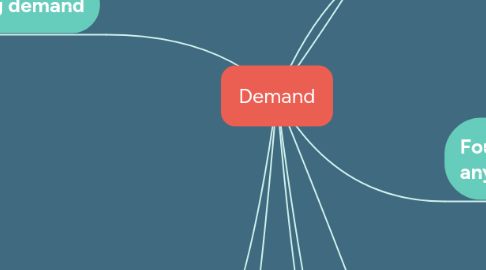
1. Law of demand can be explained by 2 measures :
1.1. Individual
1.1.1. Individual demand schedule
1.1.1.1. It is the tabular representation of the negative relationship between price and qty. demanded of x by an individual, other things being constant.
1.1.2. Individual demand curve
1.1.2.1. It is the graphical representation of individual demand schedule.
1.2. market
1.2.1. Market demand schedule
1.2.1.1. It is the tabular representation of negative relation between price and qty. demanded of x by all the consumers in the market , other things being constant.
1.2.2. market demand curve
2. Causes for negative relation between price and qty. demanded
2.1. law of diminishing marginal utility
2.2. Income effect
2.3. Substituting effect
2.4. Market size
2.5. Alternative uses of a commodity
3. Factors affecting demand
3.1. Price of the commodity itself
3.2. price of related goods
3.2.1. substitute goods
3.2.2. complementary goods
3.3. Income of an individual
3.3.1. inferior goods; income increase qty. demanded decrease and vice versa
3.3.2. Normal goods; income increase qty. demanded increase and vice versa.
3.4. Taste and Preferences
3.5. Expectations
3.6. Additional factors affecting only market demand
3.6.1. Size of population
3.6.2. Distribution of income
3.6.3. Season and climate
4. Movement in demand curve: change in demand curve due to change in price keeping other factors constant.
4.1. Extension
4.1.1. Refers to rise in demand due to fall in price assuming other factors being constant
4.2. contraction
4.2.1. Refers to fall in demand due to rise in price assuming other factors being constant.
5. Shift in demand curve: change in demand curve by change in other factors keeping price of the good constant
5.1. increase
5.1.1. Refers to rightward shift of demand curve due to favourable changes in other factors of demand keeping price constant
5.2. Decrease
5.2.1. Refers to leftward shift of demand curve due to unfavourable changes in other factors of demand keeping price constanr

